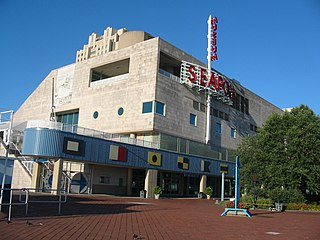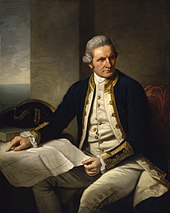
Greenwich is a town in south-east London, England, within the ceremonial county of Greater London. It is situated 5.5 miles (8.9 km) east-south-east of Charing Cross.

Greenwich Hospital was a permanent home for retired sailors of the Royal Navy, which operated from 1692 to 1869. Its buildings, in Greenwich, London, were later used by the Royal Naval College, Greenwich and the University of Greenwich, and are now known as the Old Royal Naval College. The word "hospital" was used in its original sense of a place providing hospitality for those in need of it, and did not refer to medical care, although the buildings included an infirmary which, after Greenwich Hospital closed, operated as Dreadnought Seaman's Hospital until 1986.

Nathaniel Charles Jacob Rothschild, 4th Baron Rothschild,, is a British peer, investment banker and a member of the Rothschild banking family.

Sir Arthur Henry Rostron, KBE, RD, RNR was a British merchant seaman and a seagoing officer for the Cunard Line. He is best known as the captain of the ocean liner RMS Carpathia, when it rescued the survivors from the RMS Titanic after the ship sank in 1912 in the middle of the North Atlantic Ocean.
For the English cricketer, administrator, and schoolmaster, see Roger Knight

Norman Wilkinson was a British artist who usually worked in oils, watercolours and drypoint. He was primarily a marine painter, but also an illustrator, poster artist, and wartime camoufleur. Wilkinson invented dazzle painting to protect merchant shipping during the First World War.
Sir James Caird, Baronet of Glenfarquhar was a shipowner and the principal donor in creating the National Maritime Museum, London.
Michael Strang Robinson (1910–1999) was Keeper of Pictures at the National Maritime Museum, London, England. He was an expert on the paintings of Willem van de Velde, the elder and Willem van de Velde, the younger.
Sir John Knox Laughton was a British naval historian and arguably the first to delineate the importance of the subject of Naval history as an independent field of study. Beginning his working life as a mathematically trained civilian instructor for the Royal Navy, he later became professor of modern history at King's College London and a co-founder of the Navy Records Society. A prolific writer of lives, he penned the biographies of more than 900 naval personalities for the Dictionary of National Biography.

The Independence Seaport Museum was founded in 1961 and is located in the Penn's Landing complex along the Delaware River in Philadelphia, Pennsylvania. The collections at the Independence Seaport Museum document maritime history and culture along the Delaware River. At the museum are two National Historic Landmark ships and the J. Welles Henderson Archives and Library.
The Society for Nautical Research is a British society that conducts research and sponsors projects related to maritime history worldwide.
Jonathan Betts MBE is Curator Emeritus at the Royal Observatory, Greenwich, a horological scholar and author, and an expert on the first marine timekeepers created by John Harrison in the middle of the 18th century. He was formerly Senior Specialist in horology at Greenwich. Between 2016 and 2019 he served on the board of trustees of the Institute of Conservation.

The National Maritime Museum, Cornwall is located in a harbourside building at Falmouth in Cornwall, England. The building was designed by architect M. J. Long, following an architectural design competition managed by RIBA Competitions.
Sir Geoffrey Arthur Romaine Callender was an English naval historian and the first director of the National Maritime Museum from its opening in 1937 until his death in 1946.

Rear Admiral Roy Alexander George Clare, is a non-executive Director/Trustee in the 'third sector', including appointments as: inaugural Chair of the Chelmsford Cultural Development Trust; as a member of the Board of Trustees of Good Things Foundation, the UK's leading digital inclusion charity; and The Heritage Alliance, a significant advocacy body for England's heritage.
James Lees was a British maritime expert and writer who was curator of the ship collection and Senior Conservation Officer at the National Maritime Museum, Greenwich.
Dr James Taylor MA (Hons), FRSA is a British author, expert on maritime art, and former curator of the National Maritime Museum, Greenwich, east London.

William Schaw Lindsay was a British merchant and shipowner who was the Liberal Member of Parliament for Tynemouth and North Shields from 1854 to 1859 and for Sunderland from 1859 until his resignation on grounds of ill-health in 1864.
Roger Charles Anderson was an independently-wealthy English maritime historian, collector, and a leading figure in the early years of the Society for Nautical Research and of the Navy Records Society. Four times editor of the Mariner's Mirror, Anderson was also a founder trustee, and later chairman of the board of trustees, of the National Maritime Museum, Greenwich. He was a Fellow of the Royal Historical Society, a Fellow of the Society of Antiquaries of London, and held the higher Doctor of Letters degree. In 2005, the Swedish naval historian Jan Glete characterised Anderson as "one of the most important naval historians of the twentieth century. He mainly wrote about early modern warship technology and used his linguistic skills to write books and essays based on the literature from several countries."
















